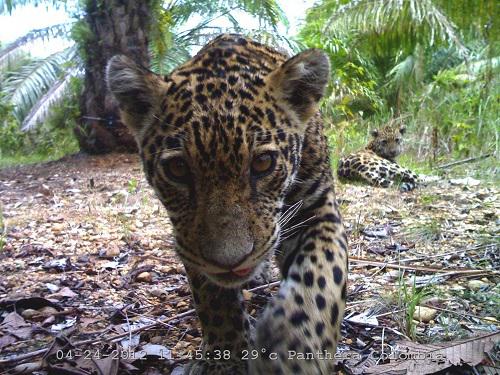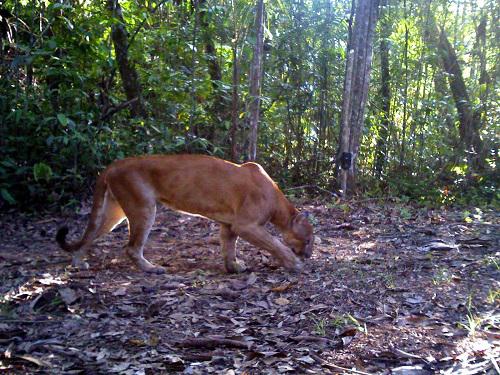Valeria Boron
This project aims at improving our understanding of jaguars and associated biodiversity ecology across increasing oil-palm landscapes (jaguar density, species richness and habitat use), and at exploring solutions to reconcile their conservation with the development of the palm oil industry in Colombia (ecosystem services provision and alternative policies) through a participatory approach.

Habitat loss driven by agricultural expansion constitutes a severe threat for tropical biodiversity and even more so for large and wide-ranging carnivores like jaguars (Panthera onca). Amongst agricultural sectors, oil-palm (Elaeis guineensis) cultivation is particularly concerning since it has already caused major deforestation, biodiversity loss, and greenhouse gas emissions in Southeast Asia and continues to expand worldwide. Colombia is the world’s 5th largest palm oil producer and oil-palm cultivation is increasing rapidly fostered by demand and national policy. This is alarming because Colombia is a “megadiverse” country, also particularly important for jaguar connectivity. Jaguar and associated biodiversity response to this crop are still poorly understood, as well as what management strategies/practices are most effective at enhancing their persistence. Furthermore, oil-palm growers are likely to see the benefits of conservation measures and land use plans as externalities. Therefore in addition to species ecology in these landscapes it is also necessary to investigate how to actually foster their conservation.

Therefore this project will both improve our understanding of jaguars and associated biodiversity ecology across increasing oil-palm landscapes using camera trapping (obj.1), and explore/develop potential solutions and to reconcile their conservation with the development of the palm oil industry in Colombia (obj.2-3). It will estimate jaguar density in an agricultural landscape with oil-palm cultivation and pastures, and produce species inventories and species richness estimators. It will also investigate jaguar and prey habitat use and daily activity patterns in these landscapes. These constitute key advancements in species ecology across ever increasing human-dominated agricultural areas and will generate knowledge to improve management practices and conservation strategies.

In terms of solutions, the project will develop best agricultural practices for jaguar and associated biodiversity conservation in oil-palm landscapes. It will also explore whether retaining forest fragments and a mixed-landscape, while benefiting biodiversity, could also provide ecosystem services to the growers by preventing the spread of the Rotten Bud palm disease, which is considered main fito-sanitary problem in Colombia (obj.2).
Lastly, it will identify the key drivers of oil-palm cultivation expansion in the region and their effects on a set of sustainability objectives under the Business as Usual scenario and the adoption of a more conservation-oriented policy (e.g. incentive schemes) through a participatory approach, network and scenario analysis combined with sustainability assessment (obj. 3). I will also conduct awareness-raising workshops in 3 communities and train local students and field guides on camera trapping.